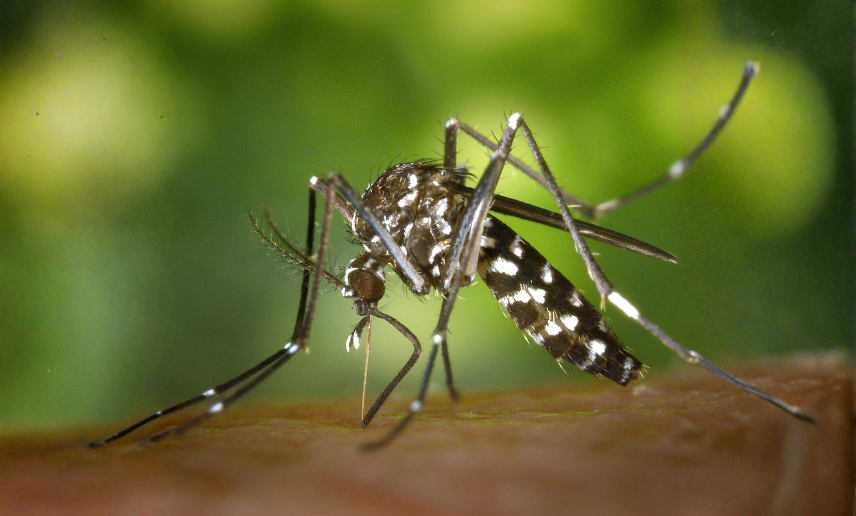Southern China Battles Record Chikungunya Outbreak as Macao Issues Prevention Measures
Southern China Battles Record Chikungunya Outbreak as Macao Issues Prevention Measures
Southern China is battling its worst chikungunya outbreak on record, driven by mosquito proliferation and changing environmental conditions. According to recent chikungunya news published in Biocontaminant, Guangdong Province is now facing the largest chikungunya fever outbreak ever documented in China. Since late July, health officials have confirmed over 4,000 infections, most of them in Shunde District, Foshan, with additional cases emerging in Guangzhou, Shenzhen, Hong Kong, and Macao.
Chikungunya in China and Hong Kong: Situation Overview
The chikungunya virus, an RNA virus from the Alphavirus genus (Togaviridae family), spreads through bites of infected Aedes mosquitoes — mainly Aedes aegypti and Aedes albopictus — which also transmit dengue and Zika viruses.
Patients usually experience sudden high fever, severe joint pain, rash, headache, and muscle aches. While chikungunya in China was once rare, environmental and urban factors have amplified the risk of transmission. Health experts emphasize that, unlike the flu, chikungunya is not contagious between people; it requires a mosquito vector. This means mosquito control is the most crucial step in preventing spread.
“The outbreak reflects both the global spread of chikungunya and the favorable conditions for mosquito-borne diseases in southern China,” said Professor Guang-Guo Ying of South China Normal University.
Chikungunya Treatment and Recovery Time
There is currently no specific antiviral drug or vaccine for chikungunya. Most patients recover through supportive chikungunya treatment, including rest, hydration, and medications such as paracetamol to relieve fever and pain. Doctors advise against using aspirin or non-steroidal anti-inflammatory drugs until dengue infection has been ruled out.
The chikungunya recovery time typically ranges from 7 to 10 days, though some patients experience prolonged joint pain for weeks or even months. Fortunately, the chikungunya virus is rarely deadly, with most cases classified as mild to moderate. Severe complications are uncommon and typically occur in people with weakened immune systems, newborns, or the elderly.
Macao Health Bureau's Preventive Measures
To inform residents about ongoing health strategies, the Macao Health Bureau held a press conference to discuss prevention and control measures for chikungunya and dengue fever.
As of October 11, 2025, Director Luo Yilong reported that since the first imported case in late July, Macao has recorded 32 chikungunya cases — 24 imported and eight locally transmitted via mosquitoes carrying the virus. Local infections remain sporadic, with no evidence of large clusters.
At Conde S. Januario Hospital, Medical Director Zeng Tanfei and Attending Physician Tian Yakun confirmed that as of October 12, 2025, six patients were hospitalized for dual infections — four diagnosed with chikungunya and two with dengue fever. None of the cases involved severe complications, and all patients are in stable condition.
The Health Bureau continues to urge residents to remove stagnant water, use mosquito repellent, and report symptoms early. Those seeking assistance can call the infectious disease hotline at 28700800.
Macao’s authorities emphasized that, although chikungunya is not contagious from person to person, the risk of mosquito-borne transmission remains, especially with frequent travel between southern Chinese cities and neighboring regions.
Climate and Urbanization: Key Drivers of the Outbreak
Authorities have launched province-wide cleanup and fumigation campaigns, focusing on areas with high mosquito density. The Biocontaminant editorial highlights climate change, rapid urbanization, and increased global travel as key factors expanding the reach of arboviruses like chikungunya worldwide.
These environmental changes have created ideal conditions for Aedes mosquitoes to breed and survive longer, intensifying the spread of vector-borne diseases in subtropical regions such as southern China, Hong Kong, and Macao.
Global Response and Public Health Coordination
The World Health Organization (WHO) has recently released updated chikungunya treatment guidelines and reinforced its Global Arbovirus Initiative, which focuses on strengthening surveillance, prevention, and rapid response systems. Experts are also calling for investment in genomic surveillance, public education, and international cooperation to curb future outbreaks.
🩺 Stay Prepared: Essential Health Safety Tools for Homes and Facilities
With rising mosquito-borne illnesses like chikungunya, having a well-organized and secure medical storage system is essential. Whether you’re managing a clinic, a workplace, or simply ensuring your household’s readiness, two reliable products can help enhance your health preparedness:
A durable, wall-mountable cabinet that keeps essential medical supplies organized, secure, and easily accessible during health emergencies.
🔹 Medical Lockbox with Keys – Insulated & Secure (14"x7.5"x10.25")
Ideal for hospitals, clinics, and laboratories, this insulated lockbox ensures safe storage of sensitive medical materials while maintaining temperature stability and preventing unauthorized access.
Be proactive — equip your facility or home today with dependable medical storage solutions from LabMedUSA.com, helping you stay ready for any health emergency.







Leave a comment